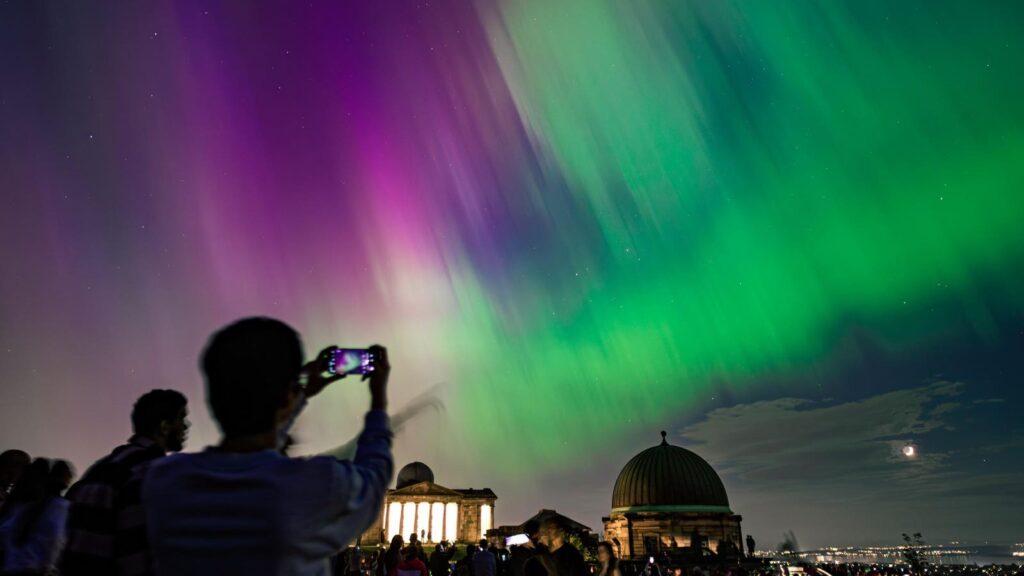Calton Hill crowded with spectators, man captures stunning northern lights on smartphone, under … [+]
gettyIf the Northern Lights — also known as the aurora borealis — do become visible from the U.S. this weekend, many of the finest images will be taken using smartphone cameras.
So how do you take a photo of the Northern Lights with your phone? Greens, reds and even blues dancing across the sky are common at northern latitudes, such as the Arctic and Antarctic Circles, but very rare in the likes of Florida, the Bahamas and Mexico.
However, that’s what happened during May 10’s sudden “solar superstorm” and it could happen again this weekend, so it may pay to be prepared.
Before you do anything else, think about visiting a dark sky site. Also check NOAA’s Aurora Dashboard, specifically for the Aurora Viewline for Tonight and Tomorrow.
The truth about the Northern Lights is that you usually get the best view through a smartphone (and even better using a DSLR or mirrorless camera). Even when aurora is invisible to the naked eye, smartphone cameras are often sensitive enough to detect them. Why? As well as aurora often being faint, they’re hugely affected by light pollution. Taking a long-exposure photo — even if only for a few seconds — is an effective way of glimpsing the reds and greens in the sky even when your eyes cannot.
If you’re successful at capturing aurora, don’t oversaturate color during editing, which makes them look fake and unbelievable.
What’s The Best Way To Photograph The Northern Lights?
Here’s how to use a smartphone to photograph displays of aurora:
- Engage “Night Mode,” which will be good enough to get a more impressive souvenir shot of the aurora. It likely means a long exposure of between five and 10 seconds, which makes the next three steps essential.
- Use your primary lens, NOT the super-wide lens (which is inferior).
- Use a basic smartphone holder and a small tripod to prevent any camera shake, keeping your images sharp.
- Shoot in raw, making it easier to improve your photos using simple edits.
How To Photograph The Northern Lights With A DSLR Or Mirrorless Camera
If you have a DSLR or mirrorless camera and can manipulate the ISO, aperture and shutter speed, you can photography the aurora in higher quality.
- Use a tripod to prevent camera shake and boost detail.
- Shoot in RAW to make post-processing easier.
- Use a wide-angle lens (14mm works well)
- In manual mode, set the lens to focus on infinity.
- Use a low f-number (f/2.8 or f/4) to allow lots of light into your camera.
- Use an ISO of between 100 and 800, depending on how dark your location is.
- Experiment with different shutter speeds from three to 15 seconds.
Wishing you clear skies and wide eyes.
